My family immigrated from The Netherlands in 1959 and I was placed in Preston Hollow Elementary School in Dallas, Texas in the second half of first grade. In second grade I was playing piano in school performances, but soon, a child-sized cello arrived along with my mother’s family, the Vaandrager’s, when the immigrated from Holland to Garland, Texas.
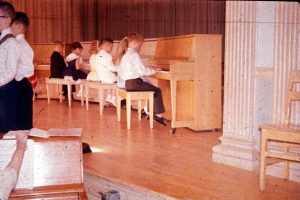
I was given private cello lessons from Mrs. Herskovits, who played cello with the Dallas symphony orchestra.
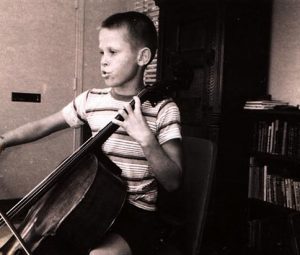
I played in Benjamin Frankland’s Junior High School and Hillcrest Highschool each year until my junior year, when I finally dropped out of the orchestra.
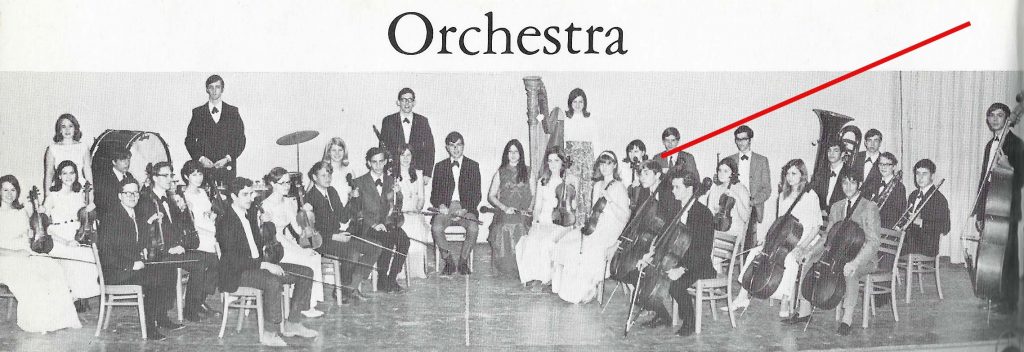
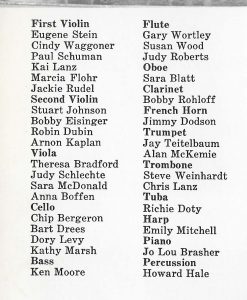
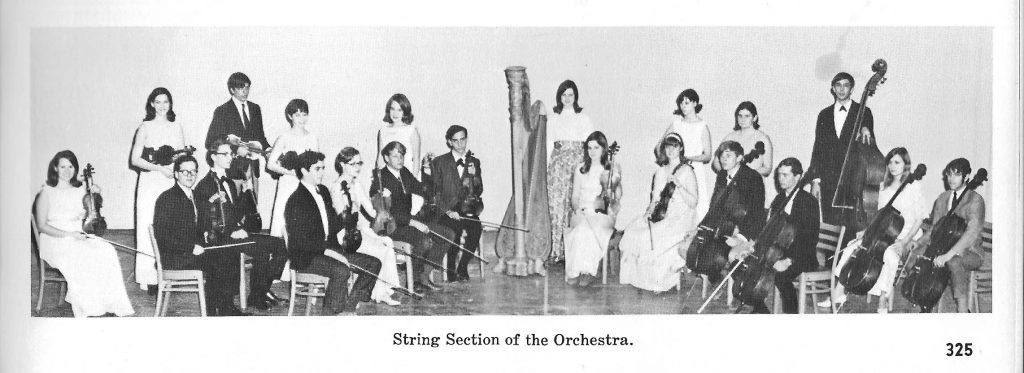
My most memorable times in the years of orchestra were spent playing with smaller groups of quartets or quintets in a small room. I didn’t like performing in front of the school class in the auditorium because I thought it was “square” to be in the orchestra after the Beatles came out. I was trying to grow out my hair! I played in most of the musicals and LEAST enjoyed playing Pomp and Circumstance Marches, Op. 39 (Edward Elgar) for hours at EVERY graduation, as graduates crossed the stage. I realize now that an orchestra is just a big cover song band of musicians.
The bad thing about the way I learned to play cello is that I read the music. Today, I couldn’t play you any of the tunes I played in the orchestra because I never memorized them and relied only on the text. When I taught myself how to play guitar on my brothers nylon Silvertone acoustic guitar (which still has my pick scratch marks!), I played by ear. Now I could play every song (I recorded) with some review: That’s muscle memory.
However, the orchestra experience taught me a lot about the musicians playing different lines of music all around me. That inspired me to write a grade school reader, “The Triangle Player“. During class practices I enjoyed adding my own musical “lines” – often imitating Jimi Hendrix licks… At home, I continued to play guitar and piano in the house, and at one time my parents gave me a snare drum. I played LOUD! That is, until my Mom screamed out from the kitchen, “Baaaarrrrrttt!!!” (meaning shut the *#@! up).
I was recording song after song, by my self and with my neighbors of Stichter Street (Ave.) in Dallas, Texas, the “Stichter Street Gang Band” (with Bart and sometimes Herman Drees, Mike and Pat Flanery, Linda, Walter and Sam Morgan and occasionally Paul Noyd).
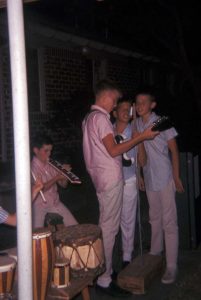
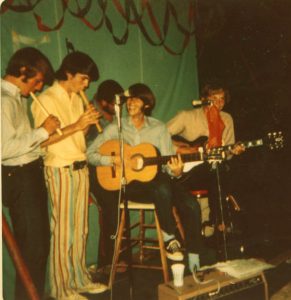
I would multi-track my own tunes by recording between the speakers of the borrowed Morgan family’s portable cassette recorder and my family’s reel-to-reel tape Dutch recorder. I could add echo by putting my microphone in the floor heater of our peer and beam home. However, the more times I “bounces” the recordings the worse the quality got.
During my high school years after my brother and sister left for college, I really experimented with the piano when no one was home. I would take off the cover and pluck the strings like a harp; and play so loud that I broke a number of piano strings, which makes for an interesting story about my Dad, entitled “No Damn Magic“.
During my mostly enjoyable career as an entomologist at Texas A&M University, my leisure time was spent making music using the equipment at hand. Having made sound recordings all my life (even recording the sounds of horse and deer flies (Diptera, Tabanidae) in the laboratory of Dr. Donald J. Borror at the Biological Science Building at The Ohio State University from 1977-1980 for my dissertation, “The Bioacoustics Of Tabanidae (Diptera)“), I spent time writing and recording songs. As technology improved, I began to make home-made CD’s along with jackets. I would make 15 or so to send to friends, collaborators and relatives. Then my kids stopped listening to CD’s and mainly listened to music streaming online. By being an independent publisher through BMI.com and uploading my works to TuneCore.com, I have achieved making my vintage and current music available to a distribution system world wide. I’ve learned that releasing cover songs can also be achieved, not through Bart Drees Tunes, but in my legal name through TuneLicencing.com or EasySong.com.